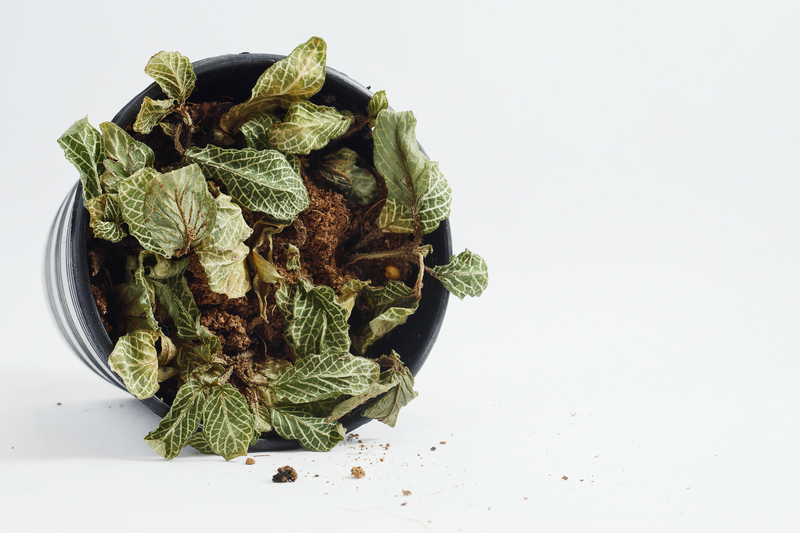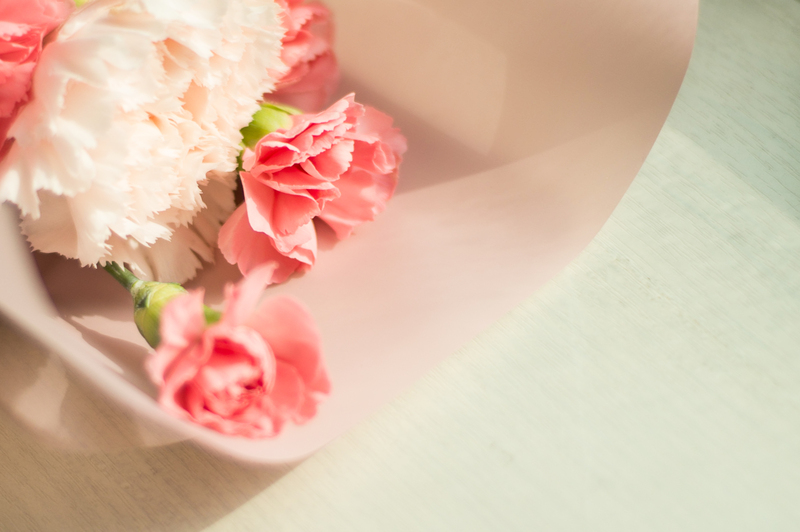How to Cultivate Brilliant Orchids at Home
Posted on 30/08/2025
How to Cultivate Brilliant Orchids at Home
Are you looking to cultivate brilliant orchids at home? Orchids are renowned for their stunning blooms and exotic allure, making them a favorite among houseplant enthusiasts. With the right guidance, even beginners can enjoy healthy, vibrant orchids in their own living spaces. This comprehensive guide will equip you with essential tips, techniques, and knowledge to help your orchids thrive indoors.
Why Grow Orchids at Home?
The cultivation of orchids goes beyond mere aesthetics. Orchids are more than just beautiful flowers; they symbolize grace, love, and luxury across various cultures. Bringing them into your home can uplift your mood, purify your indoor air, and even strengthen your sense of accomplishment as a gardener. Growing magnificent orchids at home allows you to add a unique, elegant touch to your decor while connecting to nature in deeply rewarding ways.

Understanding Orchids: An Overview
Before you start, it's vital to have some background knowledge about these exquisite plants. Orchids comprise one of the largest families of flowering plants in the world, with over 25,000 species! Each species has unique care demands, but most cultivated orchids share common needs.
- Epiphytic Orchids: These orchids grow on trees in nature and take nutrients from the air, rain, or debris around them. Popular epiphytic orchids include Phalaenopsis and Cattleya.
- Terrestrial Orchids: These types grow in soil and include species like Paphiopedilum and Cymbidium.
Knowing your orchid's type is key to mastering orchid cultivation at home.
The Ideal Orchid Environment: Mimic Nature Indoors
To achieve brilliant orchid flowers at home, strive to recreate their natural habitat as closely as possible. Most orchids originate from tropical or subtropical regions, where conditions are warm, humid, and airy.
Lighting for Orchids
- Bright, indirect sunlight is best. Place your orchid near an east- or south-facing window filtered by sheer curtains to prevent leaf burn.
- Too much direct sun will scorch leaves; too little light results in poor blooming and limp growth.
- Supplement with grow lights if your home lacks natural light, especially during winter months.
Temperature and Humidity
- Most orchids prefer temperatures between 60-80?F (15-27?C) during the day and slightly cooler at night.
- Humidity should range between 40-70%. Increase moisture by grouping plants, using humidity trays, or running a room humidifier.
Air Circulation
- Ensure good ventilation to prevent fungal and bacterial diseases.
- A small fan set on low can gently stir the air around your orchids.
How to Choose the Right Orchid for Your Home
For those starting their journey with home orchid growing, certain types are more forgiving:
- Phalaenopsis (Moth Orchids): The most popular and easiest orchid for beginners. They bloom for months with proper care.
- Cattleya Orchids: Known for their fragrant, stunning blooms--perfect for dramatic displays.
- Dendrobium Orchids: Adaptable and reliable, with clusters of eye-catching blossoms.
When selecting an orchid, inspect the plant for:
- Healthy roots (firm, green or white)
- Vibrant leaves free from spots or discoloration
- No signs of pests or disease
Orchid Potting Mix & Containers: The Perfect Home Base
Unlike most houseplants, orchids do not grow well in regular potting soil. They require a specialized orchid potting mix that mimics their natural growing environment.
Top Potting Mix Ingredients
- Bark chips (fir, pine, or redwood) for excellent drainage
- Sphagnum moss or coco coir to retain moisture
- Perlite or charcoal for added aeration and to prevent rot
Select a container with ample drainage holes. Orchid pots often have slits or openings along the sides to enhance airflow. Transparent plastic pots are popular, as they let you monitor root health.
Watering Orchids: Striking the Right Balance
Overwatering is the fastest way to kill an orchid, while under-watering leads to shriveled roots and poor blooms. Here's how to master orchid watering:
- Let the potting mix dry slightly between waterings. Insert a finger in the mix; if it feels dry an inch down, it's time to water.
- Use tepid, non-softened water. Rainwater, distilled, or filtered water is best, as tap water can contain salts or chemicals harmful to orchids.
- Water early in the day so excess moisture can evaporate, reducing the risk of rot.
- Avoid letting water sit in the crown (the plant's central base), as this can lead to crown rot.
Depending on your household conditions and orchid type, watering is usually required once a week in winter and up to twice a week in summer.
Feeding Your Orchids: Fertilizer Tips for Vibrant Blooms
Just like people, orchids need nourishment for robust growth and flowering.
- Apply a balanced orchid fertilizer (20-20-20 or 30-10-10) at half-strength every 2-4 weeks during the active growing season (spring and summer).
- Cut back feeding in autumn and winter when growth slows.
- Occasionally flush the potting mix with plain water to remove built-up salts, which can damage roots.
Repotting Orchids: Keep Your Plants Healthy and Happy
Repotting is essential for ongoing orchid health, yet many home growers neglect this step. Repot your orchid every 1-2 years, or whenever:
- The potting mix breaks down and retains too much moisture
- Roots overflow from the pot or become tightly tangled
- You see signs of disease or pest infestation
How to Repot Your Orchid:
- Gently remove the orchid from its container and shake off old potting media.
- Trim away any mushy, black, or dead roots with sterilized scissors.
- Place the orchid in a fresh, appropriately sized pot and surround the roots with new potting mix, making sure they spread out naturally.
- Water thoroughly and allow proper drainage.
Managing Orchid Pests and Common Diseases
No garden is immune to pests or illnesses, but indoor orchids can largely stay healthy with good care. Still, watch for:
- Aphids, scale, and mealybugs: Remove by wiping with a soapy cloth or treat with insecticidal soap.
- Spider mites: These thrive in dry air. Increase humidity and gently rinse leaves with water.
- Root rot and fungal infections: Caused by excess moisture or poor drainage. Remove damaged roots and repot in fresh mix.
Always quarantine new or sick orchids to avoid spreading pests or disease to your collection.
Encouraging Re-Blooming for Year-Round Orchid Brilliance
Getting your orchid to bloom again at home is the ultimate reward for your efforts. After their initial spectacular display, orchids often enter a rest phase. Here are ways to promote re-flowering:
- Stick to proper lighting - insufficient light is the #1 reason orchids refuse to rebloom.
- Allow night-time temperature drops (by 10-15?F) for a few weeks to trigger bud formation, especially important for Phalaenopsis orchids.
- Cut back on watering slightly during the rest period, and resume normal care as new growth appears.
Patience is key. With the right conditions, your orchid should produce another wave of stunning blooms within 6-12 months, sometimes more often!
Tips for Creating an Orchid-Friendly Display at Home
Display your brilliantly flowering orchids where you can admire them daily:
- Arrange in groups or tiers on plant stands for dramatic effect and shared humidity.
- Rotate containers occasionally to keep all sides growing evenly.
- Don't overcrowd - sufficient airflow is essential for healthy plants.

Frequently Asked Questions About Home Orchid Cultivation
-
Q: How long do orchids live indoors?
A: With proper care, many orchids can thrive and flower for 10-15 years or longer in your home! -
Q: Why are my orchid leaves wrinkled or limp?
A: This usually means underwatering or root damage; inspect roots for health and check your watering routine. -
Q: Can I grow orchids in any room?
A: Any room with adequate light, warmth, and humidity will do--but avoid dry, drafty, or cold spots.
Conclusion: Enjoy the Rewards of Thriving Orchids at Home
Learning how to grow brilliant orchids at home is a richly satisfying hobby filled with beauty and learning. By providing the right environment, choosing suitable orchid varieties, and mastering care techniques like feeding, watering, and repotting, you can enjoy exquisite orchid blooms for years to come. Remember, even the most expert growers learn by observing their plants and being attentive to their changing needs.
Start your journey in orchid cultivation at home today and transform your indoor space into a breathtaking tropical oasis!
```
